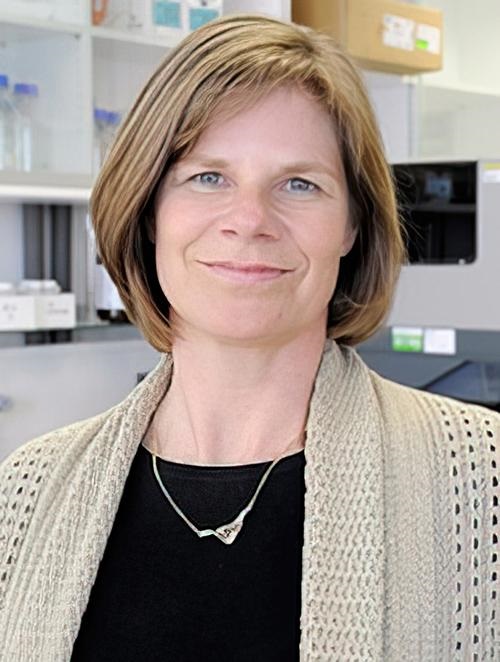German Researchers Develop DNA Origami That Traps and Neutralizes Certain Viruses
This “Virus Trap” might eventually be manufactured by clinical laboratories for the diagnostic process
Clinical laboratory managers and pathologists will be fascinated by this new treatment coming out of Germany for viral infections. It’s an entirely different technology approach to locating and neutralizing live viruses that may eventually be able to control anti-viral-resistant strains of specific viruses as well.
As virologists and microbiologists are aware, even in our present era of technological and medical advances, viral infections are extremely difficult to treat. There are currently no effective antidotes against most viral infections and antibiotics are only successful in fighting bacterial infections.
Thus, this new technology developed by a research team at the Technical University of Munich (TUM) in Munich, Germany, that uses DNA origami to neutralize and trap viruses and render them harmless is sure to gain swift attention, especially given the world’s battle with the SARS-CoV-2 Omicron variant.
The researchers published their findings in the peer-reviewed journal Nature Materials, titled, “Programmable Icosahedral Shell System for Virus Trapping.”

“Bacteria have a metabolism. We can attack them in different ways,” said virologist Ulrike Protzer, MD (above), Director of the Institute of Virology at TUM School of Medicine and one of the authors of the study, in a TUM press release. “Viruses, on the other hand, do not have their own metabolism, which is why antiviral drugs are almost always targeted against a specific enzyme in a single virus. Such a development takes time. If the idea of simply mechanically eliminating viruses can be realized, this would be widely applicable and thus an important breakthrough, especially for newly emerging viruses,” she added. (Photo copyright: Helmholtz Munich.)
Entrapping Viruses within 3D Hollow Structures
DNA origami is the nanoscale folding of DNA to create two- and three-dimensional complex shapes that can be manufactured with a high degree of precision at the nanoscale. Researchers have been working with and enhancing this technique for about 15 years.
However, scientists at TUM wondered if they could create such hollow structures based on the capsules that encompass viruses to entrap those viruses. They developed a method that made it possible to create artificial hollow bodies the size of a virus and explored using those hollow bodies as a type of “virus trap.”
The researchers theorized that if those hollow bodies could be lined on the inside with virus-binding molecules, they could tightly bind the viruses and remove them from circulation. For this method to be successful, however, those hollow bodies had to have large enough openings to ensure the viruses could get into the shells.
“None of the objects that we had built using DNA origami technology at that time would have been able to engulf a whole virus—they were simply too small,” said Hendrik Dietz, PhD, Professor of Physics at TUM and an author of the study in a press release. “Building stable hollow bodies of this size was a huge challenge,” he added.
So, the team of researchers used the icosahedron geometric shape, which is an object comprised of 20 sides. They engineered the hollow bodies for their virus trap from three-dimensional, triangular plates which had to have slightly beveled edges to ensure the binding points would assemble properly to the desired objects.
“In this way, we can now program the shape and size of the desired objects using the exact shape of the triangular plates,” Dietz explained. “We can now produce objects with up to 180 subunits and achieve yields of up to 95%. The route there was, however, quite rocky, with many iterations.”
By varying the binding points on the edges of the triangles, the scientists were able to create closed hollow spheres and spheres with openings or half-shells that could be utilized as virus traps. They successfully tested their virus traps on adeno-associated viruses (AAV) and hepatitis B viruses in cell cultures.
“Even a simple half-shell of the right size shows a measurable reduction in virus activity,” Dietz stated in the press release. “If we put five binding sites for the virus on the inside—for example suitable antibodies—we can already block the virus by 80%. If we incorporate more, we achieve complete blocking.”
The team irradiated their finished building blocks with ultraviolet (UV) light and then treated the outside with polyethylene glycol and oligolysine. This process prevented the DNA particles from being immediately degraded in body fluids. Those particles were stable in mouse serum for 24 hours. The TUM scientists plan to test their building blocks on living mice soon.
“We are very confident that this material will also be well tolerated by the human body,” Dietz said.
Could Clinical Laboratories Manufacture Components of the Virus Traps?
The researchers noted that the starting materials for their virus traps can be mass produced at a very reasonable cost and may have other uses.
“In addition to the proposed application as a virus trap, our programmable system also creates other opportunities,” Dietz said. “It would also be conceivable to use it as a multivalent antigen carrier for vaccinations, as a DNA or RNA carrier for gene therapy, or as a transport vehicle for drugs.”
There is much research yet to be done on this cutting-edge technology. However, for this therapy to be appropriate for a patient, a specimen of the virus will need to be identified and studied. Then, the DNA origami would be tailored to capture that specific virus. Thus, it’s conceivable that clinical laboratories, if used for the diagnostic step, might also be able to then manufacture the virus trap that is customized to locate, surround, and neutralize that specific virus.
—JP Schlingman
Related Information:
Programmable Icosahedral Shell System for Virus Trapping
Custom-Size, Functional, and Durable DNA Origami with Design-Specific Scaffolds



